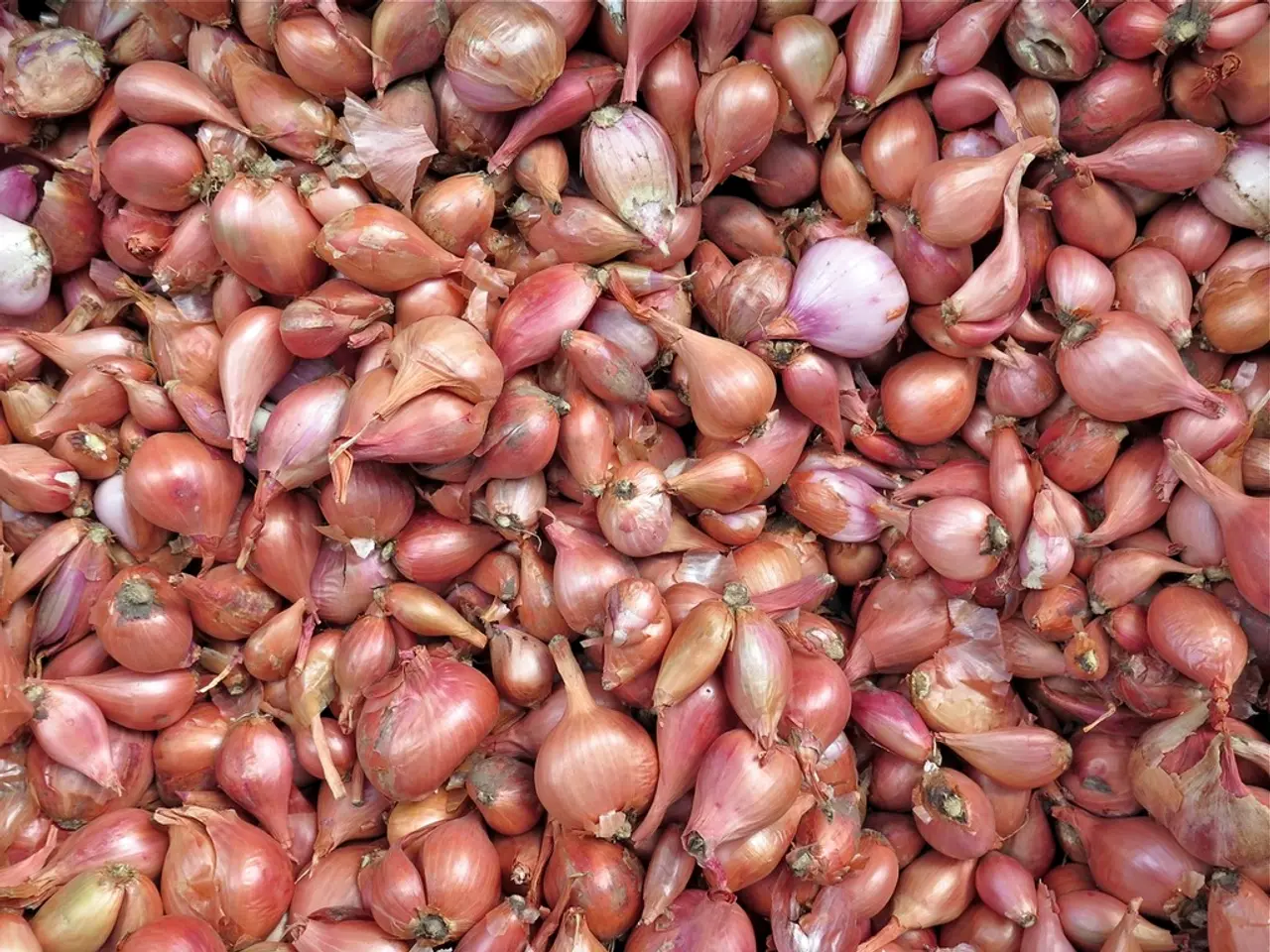Essential Agriculture Insights: Mastering the Art of Cultivating and Storing Onions
Growing and Choosing the Perfect Onions for Your Garden
Onions are a versatile vegetable that can add flavour and depth to a wide range of dishes. Whether you're growing them for fresh eating, freezing, or storing, understanding the different types and how to care for them is essential.
Onion Varieties for Different Climates and Day-Lengths
The best onion varieties for a home garden depend on your regional climate and day-length conditions. Onions are mainly categorized as long-day, short-day, and intermediate-day onions.
Long-day onions (require 14-16 hours of daylight) are ideal for northern regions or cooler climates with long summer days. Examples include 'Yellow Sweet Spanish', 'Red Burgundy', and Walla Walla Sweet Yellow. These produce large bulbs in areas like northern U.S., Canada, and northern Europe.
Short-day onions (require 10-12 hours daylight) are best for southern regions with mild winters. Examples include 'White Lisbon', 'White Creole', Galmi onion, and Red Grano. These tend to form bulbs in southern U.S., parts of Africa, and other lower latitude areas.
Intermediate-day onions fit moderate day-length zones and can be chosen based on local availability and trial.
Recommended Home Garden Varieties by Climate
| Climate / Region | Recommended Onion Variety | Characteristics | |--------------------------|---------------------------------|--------------------------------------------------| | Northern (Long days) | Yellow Sweet Spanish | Large, mild, sweet, great for fresh eating | | | Red Burgundy | Medium size, deep red, nice for grilling/caramelizing | | | Walla Walla Sweet Yellow | Large, sweet, short storage life, overwintering type| | Southern (Short days) | White Lisbon | Small-medium bulbs, white flesh, delicate flavor | | | White Creole | Medium size, good storage, pungent flavor | | | Galmi (African short-day) | Flat, thick pinkish-purple bulbs, keep well | | | Red Grano | Medium sized red, mild flavor, slicing & canning | | General / Intermediate | Varieties suited to specific local conditions or packaging notes |
Growing Onions from Seeds vs. Sets
Onions can be grown from seeds or sets. Growing from seeds allows for a wider variety of choices, including heirlooms and organics, but they require more care and time (~105-120 days before maturity). On the other hand, sets mature faster (about 14 weeks) and are more resistant to light freezes and generally have a higher success rate in home gardens.
Key Growing Tips
- Select an onion variety suited to your daylight length and climate.
- Start seeds indoors 8-10 weeks before last frost or buy sets for easier planting.
- Ensure well-drained soil, full sun, and moderate watering.
- Onions are shallow-rooted; avoid overwatering.
- Fertilize moderately but regularly for best bulb development.
- Harvest when tops fall over and dry naturally.
Protecting Onions against Onion Maggots
Protecting onions against onion maggots with insect mesh can be beneficial. This simple measure can help prevent these pests from damaging your crop.
Curing and Storing Onions
Onions need to be cured for several weeks before storing to ensure they are dry. This process helps them store well. Whole onions can be frozen if you have a place that stays slightly below freezing, such as a shop or garage. Onions grown from onion sets can still be stored for a couple of months with proper curing.
Perennial Onions
Perennial onions are a great addition to any garden as they require minimal maintenance and will come back year after year. Examples include the Walking Onion, also known as the Egyptian or Tree Onion, and Welsh onions. These onions will develop new clumps you can harvest.
Scallions and Sweet Onions
Scallions, also known as green onions, are an excellent choice if you have difficulty growing onion bulbs or are simply interested in greens. They can be planted early in the spring and will continue to grow throughout the summer, giving you a constant supply of fresh greens. The sweet or Spanish onion is a type of vegetable onion that is excellent for adding to salads, eating raw, or making onion rings. They are not as resilient as cooking onions, require more space to grow, and do not store as long.
In summary, choose long-day varieties like 'Yellow Sweet Spanish' or Walla Walla for cooler climates with long summer days, and short-day varieties like 'White Lisbon' or 'White Creole' for warmer, milder climates. Growing from sets offers a faster and more reliable harvest for beginners, while seeds provide more variety choices but need more care and time.
- For selected onion varieties to thrive in a home garden, it's crucial to consider the regional climate and day-length conditions, as onions are categorized as long-day, short-day, and intermediate-day onions.
- Long-day onions, such as 'Yellow Sweet Spanish', 'Red Burgundy', and Walla Walla Sweet Yellow, are suitable for cooler climates and longer summer days found in northern regions.
- In contrast, short-day onions, like 'White Lisbon', 'White Creole', Galmi onion, and Red Grano, perform well in mild-winter regions with shorter day-lengths.
- Intermediate-day onions can be chosen for moderate day-length zones, taking into account local availability and trial-and-error.
- Inadequate drainage, insufficient sunlight, or heavy watering can hinder the growth of onions, which are shallow-rooted and prefer well-drained soil, full sun, and moderate watering.
- To extend the life of onions, consider curing and storing them properly, as whole onions can be frozen or stored for a few months with proper curing and distribution to maintain airflow.
- To maintain a lush lifestyle, incorporating a variety of onion plants, such as perennial onions, scallions, sweet onions, and heirloom or organic varieties, can facilitate a wide range of food-and-drink and home-and-garden recipes.
- Growing onions in a greenhouse or during preserving seasons can help mitigate the impact of cold climates on crop growth, ensuring a continuous food source and captivating gardening adventures.





